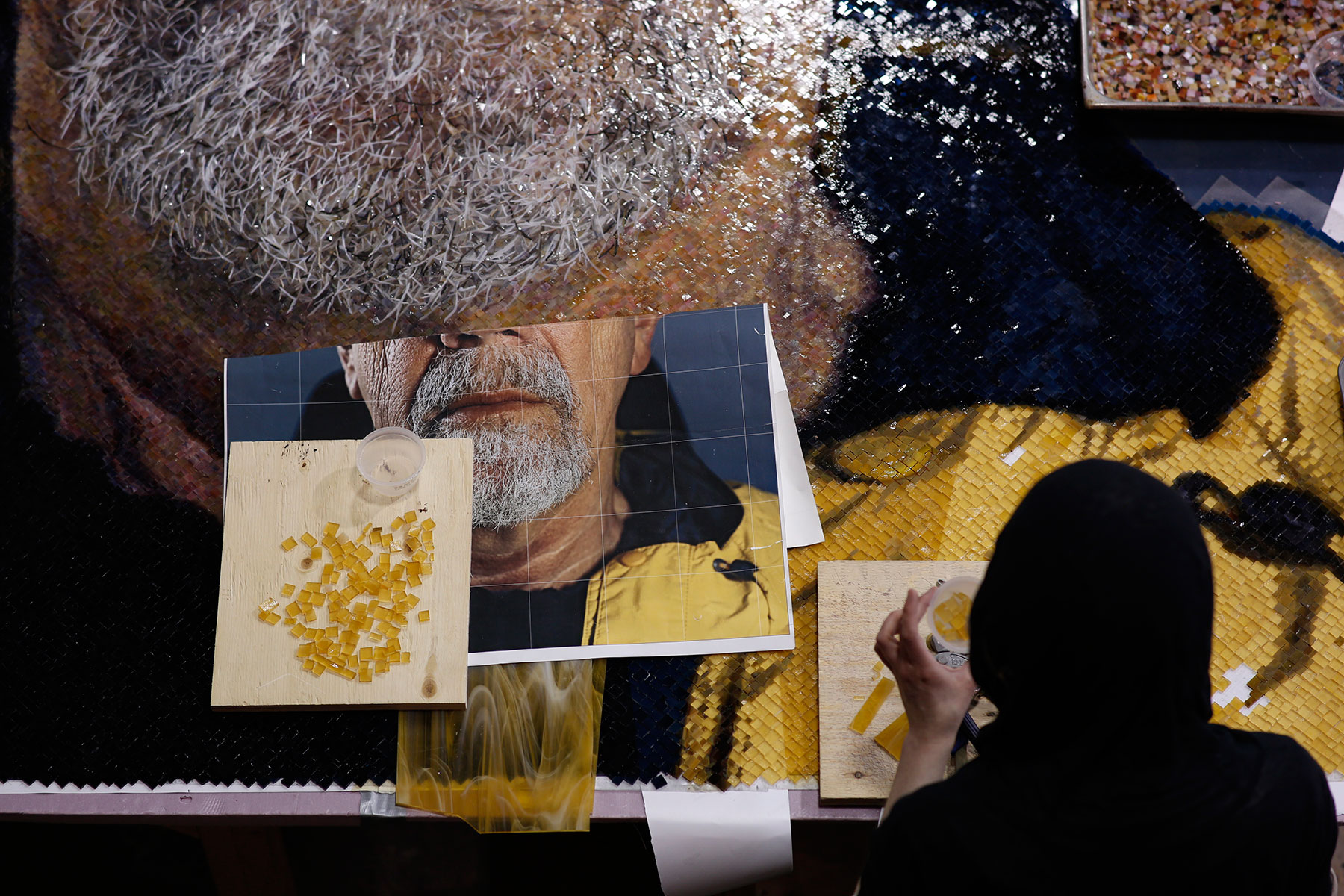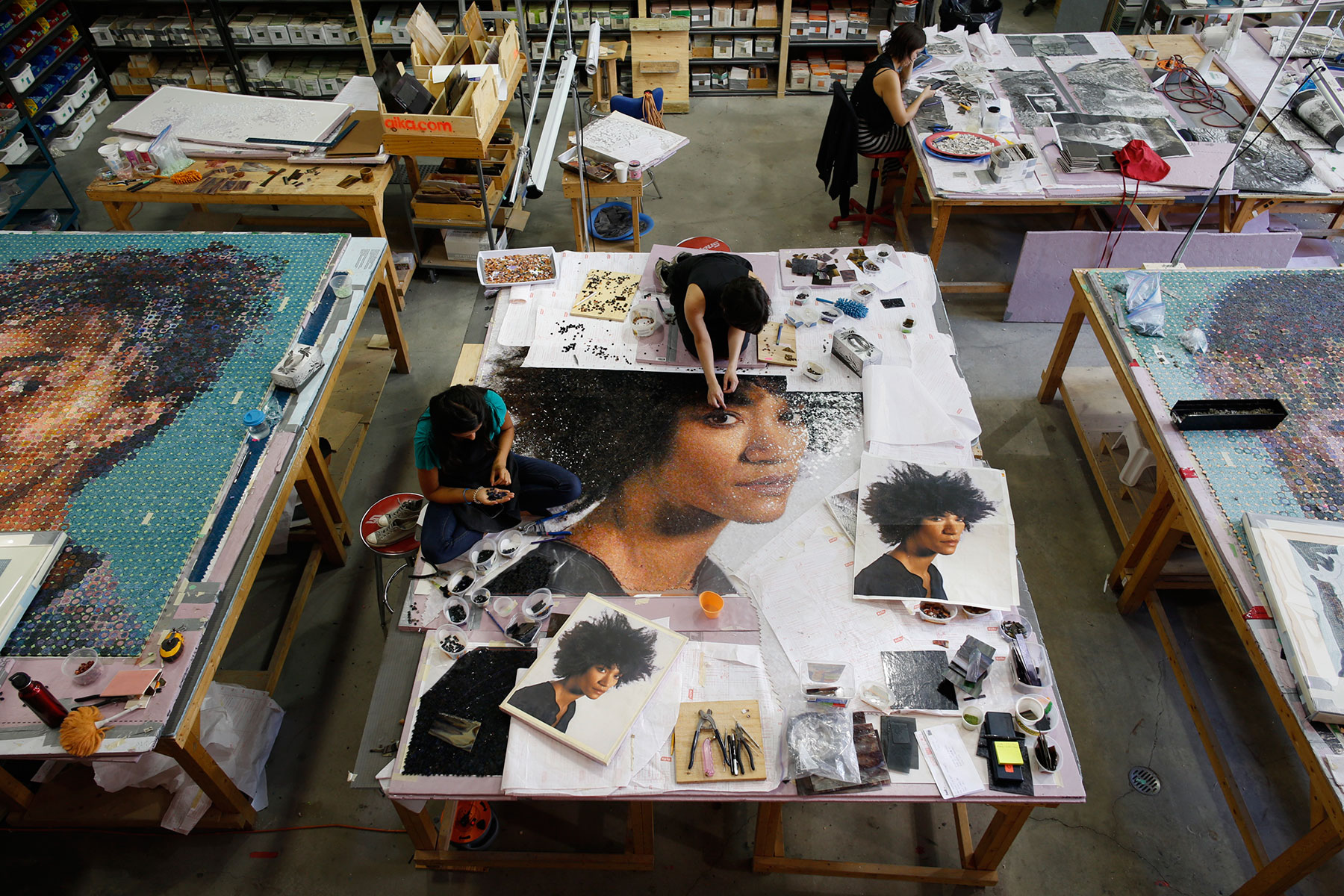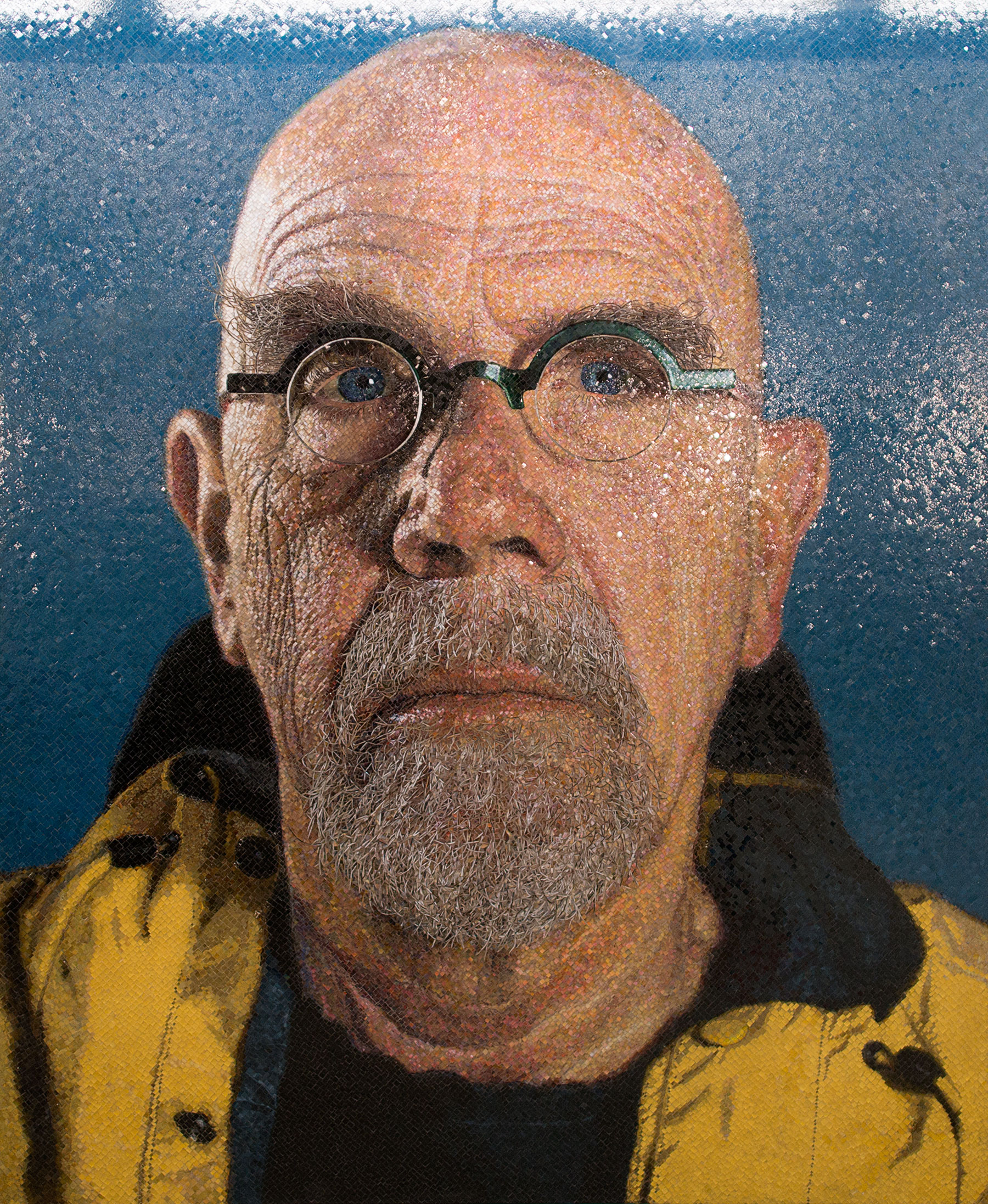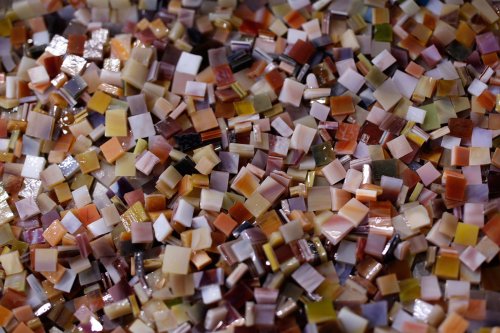Reverse Engineering Chuck Close’s Art
An interview with Saskia Siebrand from Mosaika
If you’ve used the internet in the past year, you’ve probably stumbled upon the Chuck Close mosaics that live at the Second Avenue 86th Street station in New York City. You may also remember them from "The Subterranean Scene" in American Craft. These mosaics by Close were brought to life by Mosaika, a mosaic fabrication company based in Quebec.
Mosaika started as Saskia Siebrand’s personal art practice, and it later evolved into a business partnership with her friend Kori Smyth, who provided business-savvy expertise. “In 1998 we switched it over from being my own art practice doing mosaics into a company," says Siebrand. "Kori took over all the administrative aspects of that, which was a huge relief to me. We had a strategy to get to the point where we could get to bigger and better mosaics.”
And from there, bigger and better mosaics did happen. “It was a few years into it that we realized that our best niche market would be fabricating for other artists,” Siebrand says.
In their first year of business, Siebrand took Smyth to see Chuck Close’s show in New York City. While standing in front of his work, they both decided that this was the caliber of artist they wanted to work with.
Jumping ahead to 2013, the Metropolitan Transportation Authority's Arts for Transit Division in New York approached Chuck Close about creating a series of public art mosaics for the city subway station. The project was almost dismissed after trials of mosaic tests were completed by other fabricators without success, but then Siebrand and Smyth caught wind.
They pooled all of their resources into creating three mosaic samples for Close based solely off of images from books they had on hand. Each test showed an experimental approach to the project, pushing the boundaries of what mosaics can be.
On the day of their presentation, Close examined each of the samples. Siebrand says, “It wasn’t going too well with the first one, but then the second one he got pretty excited, and by the third one he was totally on board. He said, ‘I haven’t been this excited in a while.’ ”

A mosaicist placing tiles for Self Portrait Yellow Raincoat by Chuck Close. Photo: Osheen Harruthoonyan
“He saw the versatility more than anything else," Siebrand says. "We didn’t go with any of the styles that we originally presented, but he saw that as kind of a jumping-off point that we were really willing to do anything, and that there were so many possibilities."
From there, Siebrand and her team hit the ground running. Once the right approach was in place with skilled mosaicists on board, there was nothing left to do but be very, very meticulous.
Each large-scale mosaic features an up-close portrait, ranging in the amount of detail according to what Close’s artwork demanded. A couple of the portraits are hyper-realistic renderings. “To do these gradations we had to have every shade of skin tone," Siebrand says. "If you look up close, you’ll see that we’ve done it the same way Chuck does. We alternate something that’s too pink with something that’s too yellow, and it blends in the eye to make the right skin tone. So you’ll see there’s a lot of shifting back and forth, dancing around the color rather than nailing it dead-on. That’s what gives it that kind of shimmer. It’s got an "alive" quality when you see the colors and the way that they play in the eye.”

A birds-eye view of the Mosaika studio at work on Chuck Close's mosaics. Photo: Osheen Harruthoonyan
The beauty of the pieces is two-fold: From far away, the work appears to be a photo.Up close, the material lends itself to his work, becoming more fragmented and focused on the individual pieces of glass. “Reverse engineering Chuck’s work makes me have even more respect and admiration for his artworks because they are really complex and you have to be bang-on on the color, or it does not work," says Siebrand. "The way that he is able to do these paintings, it is near miraculous.” She also describes Close’s art and technique as “a language he’s created that only he can speak.”
Watch: An up-close look at a couple of Chuck Close's mosaics.
After four years of painstakingly detailed work, the mosaics are finished, and they are mind-blowingly beautiful. When asked how she hopes people experience Close’s mosaics, Siebrand says, “I hope what they’re getting is what the artist was trying to say, and also that it’s extremely well-crafted, and that they can see the effort and the work that’s gone into it."
She hopes people are proud of how the pieces have transformed the subway space and feels that mosaic art is medium people can connect to and understand.
"It feels authentic," she says. "All these little pieces placed by hand... you can understand the human aspect.”

Self Portrait Yellow Raincoat by Chuck Close. Photo: Osheen Harruthoonyan





